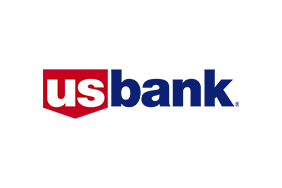Meet U.S. Bank Chief Economist Beth Ann Bovino
Bovino, who joined the bank in May, brings her extensive experience in macroeconomic and financial analysis to forecast the U.S. economy for months and years ahead
Published 02-07-24
Submitted by U.S. Bank

Originally published on U.S. Bank company blog
Living and working in New York City, Beth Ann Bovino was used to going to work and social events and feeling like her job as an economist didn’t hold the same fascination as the aspiring artists, writers and actors in the same room.
Then the Great Recession of 2008 hit.
“I was at a party chatting with someone about my thoughts on the direction of the economy, and suddenly I realized there were 15 people gathered around hanging on every word I said – that was the first time that had ever happened,” she said.
Ever since then, the economy has remained a topic of great interest from cocktail parties to corporate boardrooms. Bovino joined U.S. Bank this May as the chief economist, bringing her extensive experience in macroeconomic and financial analysis to build on the bank’s economic research capabilities to support treasury balance sheet management activities as well as client-facing businesses.
In her chief economist role, she “explains both the current economic landscape but also provides preview of the economic environment that banks will be operating in the months and years to come,” she said. Her team focuses on economic conditions that are paramount to a bank’s bottom line, such as changes in the job market or interest rates that may impact household and businesses’ willingness to borrow and spend.
Bovino’s predictions have a reputation for being spot on. The Wall Street Journal recognized Bovino as the most accurate forecaster of the U.S. economy in 2013, and the second-most accurate forecaster in 2018. Her far from consensus call on when the Fed would begin to taper its balance sheet in 2013 also proved correct when the Fed announced its plan in December of that year. Of all of her acumen to read economic indicators, though, she said perhaps equally important is the ability to realize when a forecast might be wrong and revise accordingly.
“Economic forecasting comes with a great deal of humility,” she said, noting that she’s already experienced two unprecedented economic events in her career with the Great Recession and the Covid-19 pandemic.
Bovino became interested in the field of economics when she was an undergraduate at the University of Pennsylvania, where she regularly volunteered at a local food bank in inner-city Philadelphia. It gave her an up-close view of families and individuals who were unable to find jobs and were struggling to make ends meet.
“Some of the people we served had lost their homes and couldn’t feed their children. I empathized with what they were going through, and it really made me think about the impact that the job market and the broader economy has on households,” said Bovino.
She continues to volunteer at food banks today, and has gone on to write papers about income inequality and on the dilemma many women face finding affordable childcare so they can work outside the home. Her paper received coverage in major media outlets including CNBC and Politico, and the YWCA inducted her into the YW Academy of Women Leaders in 2018.
Heading into 2024, Bovino is focused on the impact of inflation – and the Federal Reserve’s attempts to contain it by raising interest rates 11 times since 2020. Higher borrowing costs are making it difficult for households to afford cars, new homes or other major purchases without taking on significant debt.
“Affordability right now is one of the biggest worries that I have,” she said. “Fortunately, the healthy jobs market has provided cushion for many families to absorb these shocks.”
Outside of her role as economist, Bovino and her family are avid skiers and she’s an amateur oil painter. Her artistic interest dates back to her graduate-school days, when she joined the art department at Columbia University while pursuing her doctorate in economics and they gave her a studio for her personal use.
“That creative side does find its way into my day job, as it allows me to imagine possibilities for the economy that fall 'outside of the box,’” Bovino said. “It also helps when coming up with creative titles and presentations, allowing me some fun in an otherwise dry occupation.”
Click here to see Bovino speak on panels about economic inequality at the Aspen Institute and at the Milken Institute conference.

U.S. Bank
U.S. Bank
About U.S. Bank
U.S. Bancorp, with approximately 70,000 employees and $601 billion in assets as of September 30, 2022, is the parent company of U.S. Bank National Association. The Minneapolis-based company serves millions of customers locally, nationally and globally through a diversified mix of businesses: Consumer and Business Banking; Payment Services; Corporate & Commercial Banking; and Wealth Management and Investment Services. The company has been recognized for its approach to digital innovation, social responsibility, and customer service, including being named one of the 2022 World’s Most Ethical Companies and Fortune’s most admired superregional bank. Learn more at usbank.com/about.
More from U.S. Bank

